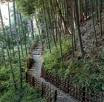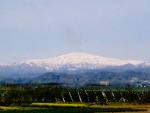:::::::::::::::::::::::::::::::::::::::::::::::::::::::::::::::::::::::::::::::::::::::::::::::::::::::::::::::::::::::::::::::::::::::::::::::::::::::::::::::::::::::::::::::::::::::::::::::::::::::::::::
- sake 酒 ricewine - Reiswein -
- sakazuki 杯 ricewine cup -
Drinking sake at official situations, festivals and good-bye parties was common already in the times of Basho.
. WKD : Ricewine, rice wine (sake, saké, saki) .
amazake 甘酒 sweet ricewine
. WKD : sakazuki 杯/ さかずき small cup for hot sake .
under construction check http://www.h6.dion.ne.jp/~jofuan/myhaiku_014.htm
:::::::::::::::::::::::::::::::::::::::::::::::::::::::::::::::::::::::::::::::::::::::::::::::::::::::::::::::::::::::::::::::::::::::::::::::::::::::::::::::::::::::::::::::::::::::::::::::::::::::::::::
伊賀の酒 ☆ 芭蕉 純米大吟醸!
Sake from Iga named after the "Haiku Saint"


source : ameblo.jp/bbcgreen35
:::::::::::::::::::::::::::::::::::::::::::::::::::::::::::::::::::::::::::::::::::::::::::::::::::::::
朝顔は酒盛知らぬ盛り哉
asagao wa sakamori shiranu sakari kana
a morning glory
knowing nothing of the carousal
in the peak of bloom
Tr. Ueda
Read more of Ueda's comments:
source : books.google.co.jp
morning glories
oblivious to all the drinking
are in full bloom
Tr. Barnhill
On the 11th day of the 8th lunar month, 1688 貞亨5年8月11日
On his way to Sarashina, there was rather noisy a fare-well party for him as he was leaving Gifu to be on his way.
This hokku has the cut marker KANA at the end of line 3.
From the Japanese it is not clear weather this is singular or plural.
MORE - hokku about the Morning Glory
. Matsuo Basho 松尾芭蕉 - Archives of the WKD .
:::::::::::::::::::::::::::::::::::::::::::::::::::::::::::::::::::::::::::::::::::::::::::::::::::::::::::::::::::::::::::::::::::::::::::::::::::::::::::::::::::::::::::::::::::::::::::::::::::::::::::::
花にうき世我が酒白く飯黒し
. hana ni ukiyo waga sake shiroku meshi kuroshi .
my sake white, my cooked rice black
寒菊や醴造る窓の前
. kangiku ya amazake tsukuru mado no saki .
sweet white ricewine
草の戸や日暮れてくれし菊の酒
. kusa no to ya higurete kureshi kiku no sake .
chrysanthemum sake
椹や花なき蝶の世捨酒
. kuwa no mi ya hana naki choo no yosute-zake .
hermit wine for the butterflies
呑明て花生となる二升樽
. nomi akete hana-ike ni sen nishoodaru .
the sake bottle becomes a flower vase
御命講や油のやうな酒五升
. Omeikoo ya abura no yoo na sake go masu .
offering for Saint Nichiren
扇にて酒くむ陰や散る桜
. oogi nite sake kumu kage ya chiru sakura .
I pretend to drink sake from my hand fan (ōgi)
..........................................................................................................................................................

酒のほそみち / 酒のほそ道
This is the title of a long-running weekly manga series by
Razuweru Hosoki ラズウェル細木 Rozwell Hosoki
. Sake no Hosomichi .
..........................................................................................................................................................
酒飲めばいとど寝られぬ夜の雪
sake nomeba itodo nerarenu yoru no yuki
drinking sake
and now it's harder to sleep:
night of snow
Tr. Barnhill
drinking sake
makes it harder to sleep . . .
snow at night
Tr. Ueda
"Something of the loneliness that is universal to men - or should I say the wavering of a reclusel's mind? - is hidden in this poem. - Mizuho
- Read Ueda's comment -
Written in 貞亨3年冬, Basho age 43.
Basho is alone at home in Fukugawa.
..........................................................................................................................................................
酒飲みに語らんかかる滝の花
. sakenomi ni kataran kakaru taki no hana .
drinking at a waterfall,
in memory of the Chinese poet Li Po, Li Bo, Li Bai 李白
..........................................................................................................................................................
初春まづ酒に梅売る匂ひかな
. shoshun mazu sake ni ume uru nioi kana .
celebrating the New Year with sake and plum blossoms
..........................................................................................................................................................
蒼海の浪酒臭し今日の月
. sookai no nami sake kusashi kyoo no tsuki .
blue sea and fragrance of sake
..........................................................................................................................................................
月花もなくて酒のむ独りかな
tsuki hana mo nakute sake nomu hitori kana
no moon, no cherry blossoms
so he drinks sake
all alone . . .
Tr. Gabi Greve
Written in spring of 1689,元禄2年春
This was written as a text for a painting, which most probably did not show moon and cherry blossoms.
Cherry blossoms and the moon are the two most important kigo for spring and autumn.
This hokku has the cut marker KANA at the end of line 3.
no moon, no blossoms,
just drinking sake
all alone
Tr. Barnhill
.........................................................................................................................................................

source : itoyo/basho
雪や砂馬より落ちよ酒の酔
yuki ya suna uma yori ochiyo sake no yoi
may it be snow and sand
you fall into from your horse:
drunk on sake
Tr. Barnhill
Written in 貞亨4年, Basho age 44, Oi no Kobumi.
His companion Etsujin 越人 had drunk too much and had fallen asleep on the horse.
. Ochi Etsujin 越智越人 .
..........................................................................................................................................................
雪を待つ上戸の顔や稲光
yuki o matsu joogo no kao ya inabikari
the faces of us sake drinkers
as we wait for the snow -
flash of lightning
Tr. Gabi Greve
Written in 1691, tenth lunar month 元禄4年10月
(now November)
They were having a party at the home of Koogetsu 耕月 Kogetsu with the discipled from Mikawa.
Suganuma Koogetsu 菅沼耕月, Suganuma Gon-emon 菅沼権右衛門
. - Suganuma Gon-emon 菅沼権右衛門 - Koogetsu 菅沼耕月 Kogetsu - .
I think the inversion of lines 1 and 2 makes for more natural English here.
awaiting the snow,
the faces of the wine lovers -
lightning flash
Tr. Barnhill
the faces of those
who love to drink -
a flash of lightning
Tr. Ueda
There are three types of joogo, jōgo,
according to their reaction to the sake:

source : parfum-satori.com
naki joogo (泣き上戸) those who start crying
warai joogo (笑い上戸) those who start laughing
okori joogo (怒り上戸) those who get angry
龍門の花や上戸の土産にせん
. ryuumon no hana ya joogo no tsuto ni sen .
Basho drinking at the Dragongate Falls, Yoshino
:::::::::::::::::::::::::::::::::::::::::::::::::::::::::::::::::::::::::::::::::::::::::::::::::::::::::::::::::::::::::::::::::::::::::::::::::::::::::::::::::::::::::::::::::::::::::::::::::::::::::::::
:::::::::::::::::::::::::::::::::::::::::::::::::::::::::::::::::::::::::::::::::::::::::::::::::::::::::::::::::::::::::::::::::::::::::::::::::::::::::::::::::::::::::::::::::::::::::::::::::::::::::::::

Buson painted Basho and one of his sake haiku
蕪村さんも尊敬した俳聖 松尾芭蕉さんの酒句
source : mbp-kobe.com/hanayama
:::::::::::::::::::::::::::::::::::::::::::::::::::::::::::::::::::::::::::::::::::::::::::::::::::::::::::::::::::::::::::::::::::::::::::::::::::::::::::::::::::::::::::::::::::::::::::::::::::::::::::::

source : drnobu1
stone memorial at 法華宗本隆寺 / 法花寺
near
Tsuruga 敦賀市 Iro no hama, Ironohama 色の浜 ("Color Beach")
小萩散れますほの小貝小盃
ko hagi chire Masuho no ko-gai ko sakazuki
drop your little petals,
bush clover, on the little shells:
our little cup
Tr. Barnhill
Bush clovers, drop
Small petals on the tiny shells
Of Masuho in my small cup !
Tr. Oseko
Little bush clover -
Let your flowers scatter
Little red shells, little sake cups
Tr. Nelson Saito
Written on the 16th day of the 8th lunar month
in 1689 元禄2年8月16日, Tsuruga, Oku no Hosomichi

Masuho no kogai, chidori Masuhogai 千鳥ますほ貝 small shells from Masuho


source : www.komaki-kamaboko.co.jp
There is also a sweet potatoe schnaps with this name.
Here is the hokku by Basho
波の間や小貝にまじる萩の塵
. nami no ma ya kogai ni majiru hagi no chiri .
This was written in memory of a waka by Saigyo 西行
潮染むるますほの小貝ひろふとて
色の浜とはいふにやあらむ
shio somuru Masuho no kogai hirou tote
Iro no hama towa iu ni ya aramu
The small crimson shells
which dye the sea tides
are gathered here,
perhaps the reason this shore
is called "Color Beach”.
Tr. Barnhill
Is it because
they gather crimson shells
which dye the ocean tides
that they call this
Color Beach?
Tr. Shirane
. Basho and Saigyo 西行 .
..........................................................................................................................................................
盃に 三つの名を飲む 今宵かな
. sakazuki ni mitsu no na o nomu koyoi kana .
in memory of the Chinese poet Li Po

source : www.chinatea.co.jp
A ricewine cup named "Basho"
Ching-te-chen Chinese style
景徳鎮手描き飲杯 芭蕉
..........................................................................................................................................................
盃の下ゆく菊や朽木盆
. sakazuki no shita yuku kiku ya Kutsuki bon .
(autumn) chrysanthemum. sake cup. tray from Kitsuki
a laquer tray from the Kutsuki region, Saga
and the story of the rejuvenating Yoro Waterfall 養老の滝 Yoro no taki
..........................................................................................................................................................
盃や山路の菊と是を干す
sakazuki ya yamaji no kiku to kore o hosu
this sake cup -
with chrysanthemums of a mountain road
I am going to drink it all
Tr. Gabi Greve
Written in 延宝7年, Basho age 36
on the ninth day of the ninth lunar month,
the Chrysanthemum Festival
His sake cup had a pattern of chrysanthemums, so the sake looked almost as collected dew from the petals. He who drinks sake from this cup every day will surely live a long live.

To collect the dew on the chrysanthemum petals and drink it would bring you long life (chooju 長寿). The Chrysanthemum Flower Festival on the 9th of September is also one to celebrate one's wish for longevity 不老長寿.
MORE - hokku about the Chrysanthemum Festival by
. Matsuo Basho 松尾芭蕉 - Archives of the WKD .
..........................................................................................................................................................
あの中に蒔絵書きたし宿の月
. ano naka ni maki-e kakitashi yado no tsuki .
(autumn) moon. at the inn. maki-e laquer. I want to draw
At a lodging in Kiso, where he was offered a rustic sakazuki sake cup with a simple maki-e laquer motive.
:::::::::::::::::::::::::::::::::::::::::::::::::::::::::::::::::::::::::::::::::::::::::::::::::::::::::::::::::::::::::::::::::::::::::::::::::::::::::::::::::::::::::::::::::::::::::::::::::::::::::::::
People being drunk
- another aspect of sake drinking
Some brands of sake can cause quite a headache on the next day,
even after a few sips.
二日酔ひものかは花のあるあひだ
futsukayoi mono kawa hana no aru aida
futsuka ei monokawa hana no aru aida
a hangover:
but while the cherries bloom,
what of it?
Tr. Barnhill
a hangover ?
who cares,
while there are blossoms
Tr. Hirschfeld
. WKD : futsukayoi 二日酔い/ 宿酔 hangover .
"still feeling drunk on the second day"
Between 1670 and 79 延宝年間(30歳~37歳)
.........................................................................................................................................................
蛍見や船頭酔うておぼつかな
. hotarumi ya sendoo yoote obotsukana .
the boatsman is drunk
.........................................................................................................................................................
酔うて寝ん撫子咲ける石の上
youte nen nadeshiko sakeru ishi no ue
yoote nen / yoote nenmu
drunk I fall asleep
the white pinks are blooming
on the rocks
Tr. Gabi Greve
Written in Summer of 1687 貞亨4年夏
The characters for nadeshiko were "stone bamboo" 石竹 in the Manyoshu poetry collection.

sekichiku 石竹 (せきちく) China pink
lit. "stone bamboo"
kara nadeshiko 唐撫子(からなでしこ)"Chinese nadeshiko"
tokonatsu 常夏 (とこなつ)
Dianthus chinensis
. WKD : Pink, Fringed Pinks, wild carnation .
kigo for mid-summer
.........................................................................................................................................................
夕顔や酔うて顔出す窓の穴
. yuugao ya yoote kao dasu mado no ana .
I am drunk (Basho about himself)
:::::::::::::::::::::::::::::::::::::::::::::::::::::::::::::::::::::::::::::::::::::::::::::::::::::::::::::::::::::::::::::::::::::::::::::::::::::::::::::::::::::::::::::::::::::::::::::::::::::::::::::

Five portraits of haikai poet Matsuo Basho 俳諧の人々
source : hakusyunetto
:::::::::::::::::::::::::::::::::::::::::::::::::::::::::::::::::::::::::::::::::::::::::::::::::::::::::::::::::::::::::::::::::::::::::::::::::::::::::::::::::::::::::::::::::::::::::::::::::::::::::::::
. WKD : Ricewine, rice wine (sake, saké, saki) .
. WKD : sakazuki 杯/ さかずき small cup for hot sake .
. Sake 酒 for rituals and festivals .
. Matsunoo Taisha 松尾大社 Matsunoo Grand Shrine
Matsuno'o Taisha - Matsu-no-o with a Sake Deity .

source : anti aging Labo
At the start of an elaborate meal, you get a sakazuki cup with a hokku by Matsuo Basho.
夕顔や秋はいろいろの瓢哉
. yuugao ya aki wa iroiro no fukube kana .
..........................................................................................................................................................
花に酔へり羽織着て刀さす女
飲みあけて花生にせん二升樽
をだまきのへそくりかねて酒かはん
川舟やよい茶よい酒よい月夜
かぜ吹かぬ秋の日瓶に酒なき日
月の宿亭主盃持ちいでよ
盃のまはる間おそき月いでて
たのむぞよ寝酒なき夜の紙衾
TBA
..........................................................................................................................................................
千代をふる天のてんつるあられ酒
chiyo o furu ten no ten tsuru ararezake
robiraki ya sekichuuan no ararezake - Yosa Buson
. WKD : ararezake あられ酒 "Hail Wine" from Nara .
:::::::::::::::::::::::::::::::::::::::::::::::::::::::::::::::::::::::::::::::::::::::::::::::::::::::::::::::::::::::::::::::::::::::::::::::::::::::::::::::::::::::::::::::::::::::::::::::::::::::::::::
[ . BACK to DARUMA MUSEUM TOP . ]
[ . BACK to WORLDKIGO . TOP . ]
:::::::::::::::::::::::::::::::::::::::::::::::::::::::::::::::::::::::::::::::::::::::::::::::::::::::::::::::::::::::::::::::::::::::::::::::::::::::::::::::::::::::::::::::::::::::::::::::::::::::::::::




























